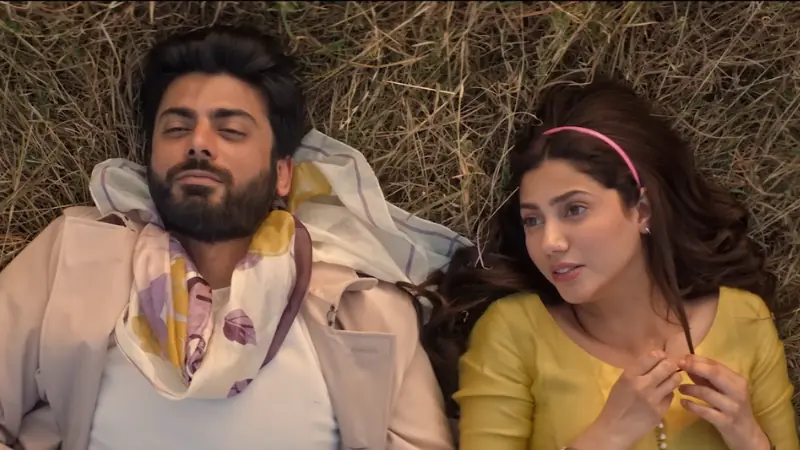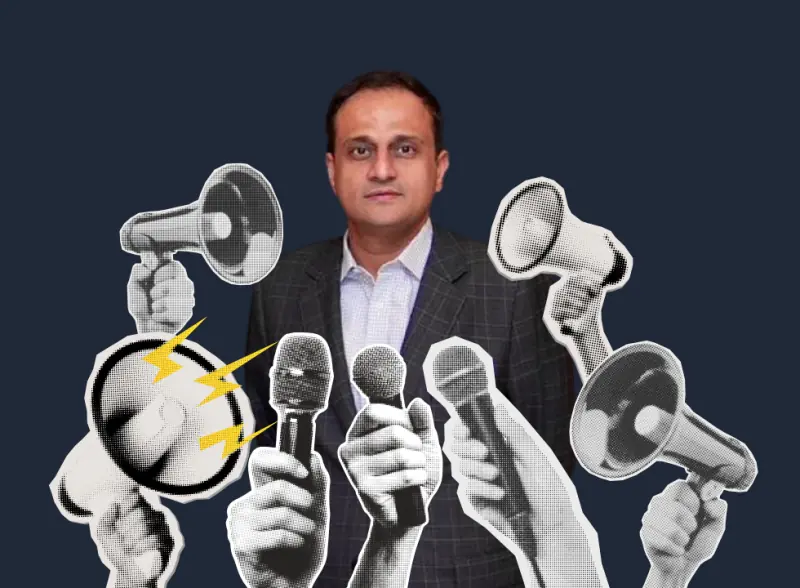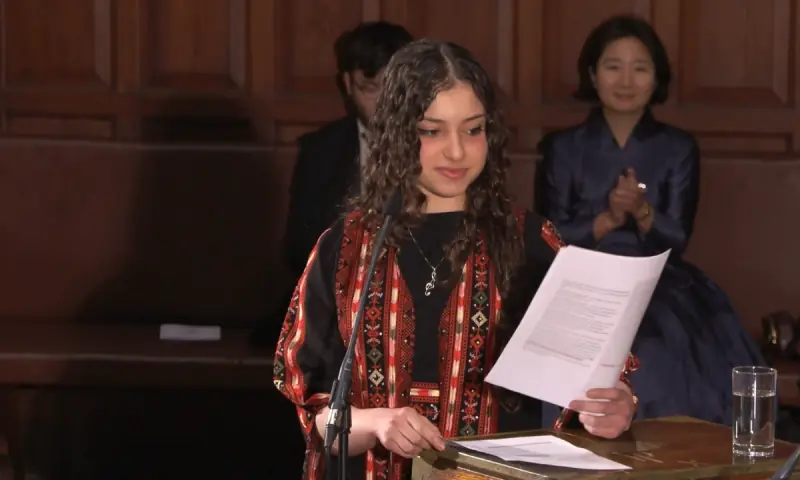As a nation I think we’re addicted to self-pity, says O Rangreza writer Saji Gul
A rebellious daughter, her gentle admirer, her hypocritical father, his muse.
O Rangreza, a drama that incorporates all these elements into one, and is currently one of Pakistan's favourite television dramas.
Sajal Aly plays the role of unapologetic and unabashed Sassi, who wants to become an actress, just like star Sonia Jehan (Sana Fakhar) whom her father, a poet named Khayaam Saani (Noman Ijaz), had always admired. Qasim (Bilal Abbas) is Sassi’s cousin who is terribly, irrevocably in love with Sassi and is nothing like her father. He is, in fact, like her mother (Irsa Ghazal, playing the role of Mumtaz): quiet, soft-spoken and gentle-natured.
There is a credible sense of gender role reversal: it is the female lead who is strong and unrepentant. When men take charge, they often mess up. It is a refreshing sight indeed, amidst the constant stream of weeping damsels in distress on television, to see a woman follow her ambition that is not centered around marriage or divorce or similar tropes. We caught up with the writer, Saji Gul, who created these characters and their powerfully different story.
Images: O Rangreza has a powerful female protagonist. Talk to us about the process of crafting this character. Is this character based on someone you know?
Saji Gul (SG): I can't say that I’ve based Sassi on one person but I’ve seen Sassi in many women around me. Society rejects and doesn’t accept women like Sassi. She has always been there, she just never had the mainstream focus or spotlight of a big drama.
This is why people are surprised to see it, amazed to see the things that she does. Sassi is every woman that has been a victim of male hypocrisy. She is every woman who is told that she can't do what a man can do. The same rules that apply to women, don’t apply to men.
In my thesis years, when I was studying at NCA, I had written a piece like this with four blocks. It charts the story of a girl who tries to become what her father loves, but her father does not accept her in that role. She tries to become what her brother approves in women but she realises, again, that her brother chooses a different standard for another woman, say his girlfriend, and a different standard for his own sister.
The same cycle repeats with her husband and her son. While I’m talking to you, though, something just occurred to me. I realised that I may have also based Sassi on a woman about whom I had heard – she wanted to learn kathak and she wasn’t able to. Her father had disapproved, her brothers had disapproved of her dancing and when she got married, her husband and children had also disapproved. So when she was sixty, she began dancing.
Images: How difficult is it to adapt a character for television? It’s a different character and story on paper but when actors, directors and producers give their own input, the characters and stories of these characters take a different turn.
SG: It’s very difficult to write for television sometimes. Sometimes, this one character is meant for just four or five episodes but when a certain actor does it in a certain way, you simply can’t let go of it. Sonia Jehan, for example (a muse for one of the play’s protagonists played by Sana Fakhar), was simply a muse and restricted to the screen. But the character kept getting bigger and more crucial.
When you’re writing a novel, a writer has more freedom. You can get as fantastical as you want. As a screenwriter, you have to imagine the whole scene. You have to understand the limitations and the different situations that a production may face. For example, in a novel the character may go into many introspections. For television, it can get boring.
For Mammo (Irsa Ghazal’s character, a demure, soft-spoken mother to a firecracker), when she dresses up and sees Khayyam – she is laughed at. All that had to be shown by action and by visual aids. I am slightly facilitated by this because I’ve studied visual arts so I can think in terms of colour and background of my characters and my stories and their symbols.
Television doesn’t just include writing or dialogues – it includes dance and music and architecture and so many other art forms that come together to produce one finished result. Sometimes, when you bring a creation from paper to screen, there can be a generation loss. But sometimes, actors and production can amplify the characters as well. The way Sajal has, for Sassi.
When a character reaches TV screens, it's because it has some truth to it that has had the power to travel. We can’t dismiss stories saying that, “Oh since I’ve never seen this happen, therefore it is impossible, therefore it never exists” – things and events and people exist beyond our experiences. The more people accept new ideas, the more courage production houses will take to create off-beat stories.
Images: Tell me more about Sassi. You talked about male hypocrisy. The play has a conversation about male hypocrisy but in Pakistani dramas it always has this conversation in a regressive way. Sassi is often victimised by the same male hypocrisy – but she is unapologetic. She takes it head on and takes charge of the situation and moves on. What was it like, writing for Sassi? Did men excommunicate with you over this?
SG: I remember attending a conference once where we talked about how strong-headed female characters have always come from men’s written works. Ankahi, Shehzori, Manto’s stories, Mumtaz Mufti’s heroines – they’ve all written amazingly strong women who have revolted against the patriarchal status quo.
As a nation, I think we’re sort of addicted to self-pity. Sometimes, I don’t know if it is some function of self-pity, but it seems that women may have some kind of wishful thinking to find a straying husband whom they want to win back.
You would be surprised that it was mostly women who took an issue with Sassi: “How could she disobey her father like that!” Even though they are seeing how ridiculously the father is flaunting the code and marrying another woman, he is breaking every boundary there is. It is now that Sassi’s critics have started to understand her position.
Every story stands on conflict. And the most interesting conflict is when the story itself conflicts with the audience. They come at odds with the character itself that hey, I didn’t think this character would act this way. But it did. How, how do I understand this?
As far as men are concerned, they can see Qasim. He’s not a man who wants to imprison Sassi. Normally men want to conquer women and show their machismo by telling the world that they’ve finally broken a woman into submission.
People may think Qasim controlling Sassi is victory. But many times, bravery is to let go. Masculinity isn’t about always winning. It is about tolerance and also to respect a woman even when a man is in a position of power.
Images: How difficult was it to pitch the idea to networks and production houses? Generally, when it comes to dramas in the past ten years, the emotion of self-pity currency has the highest rate. Sassi, in the past ten to twelve episodes, she has barely indulged in self-pity. Did you have any fears writing this? She’s sort of a radical heroine, with respect to the past decade of regression in Pakistani dramas. Did you think people would accept this girl?
SG: It took me two to three years to bring this script to the screen. It’s an entire struggle which you have to fight. Ever since this system of ratings and meters has come in, drama and screenwriting and television has become a lot like teachers and students. The idea is now to become solely entertainers. Teachers nowadays have to keep children entertained at all times, instead of actually trying to teach them something. Perhaps the writers of yore were freer than us. Reactions reached them much later than they reach us now.
The art forms of today, especially in television, is a commodity. People focus on what the end user will say, instead of what you have written. So you are usually afraid for something new and groundbreaking. If I pitch a story like, “Oh yeah so this story is like Hum Dil De Chuke Sanam” a production house might accept it more readily rather than if I tell them a story that has never been heard before. And it becomes even more risky because you are financially dependent on this work. When I started working on this script, I left all the jobs that I was doing and focused on this script.
Images: How are you feeling now? The drama is a hit.
SG: Mashallah, the feedback is great. What’s interesting is that I’m getting positive from all kinds of socio-economic backgrounds. From all kinds of educational backgrounds as well. I’m not saying that I’m some great flagbearer of change. But maybe the success of O Rangreza will open more paths and avenues for ‘different’ scripts.
Images: Do you have any message for critics, future and present writers, for audiences, for viewers?
SG: Don’t try to play god with your characters. There were many moments when Sassi challenged my own concepts and sensibilities as a man.
But I often say this example – when an observer is filming a habitat for National Geographic – if a turtle flips on its shell, the observer won’t change that. The same way, when we are writing a character, who is, let’s say not a Muslim – we can’t make them say things that we would say, if we are Muslim. We can’t impose our own thoughts and ideas as writers on the characters.
As far as writing about women is concerned, we know that even in the most orthodox of societies, the norms are always flexible for women. And no matter how strict the value system is, the situation is always movable for men. And women suffer from internalised misogyny and help enforce these strict rules for fellow women.
As audiences, we also need to be a little more open to understand stories. When a character reaches the television screens, it is because it has some truth to it that has had the power to travel. We can’t dismiss stories saying that, “Oh since I’ve never seen this happen, therefore it is impossible, therefore it never exists” – things and events and people exist beyond our experiences.
And we should be open to understanding and interpreting these experiences with an open mind because the more people accept new ideas and experimental projects, the more courage production houses will take to create off-beat stories and newer, more innovative storylines.












Comments